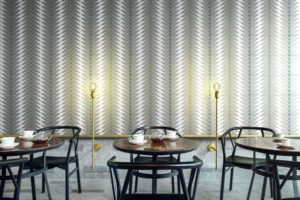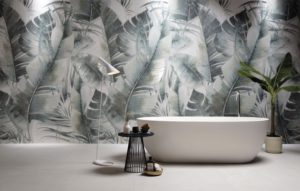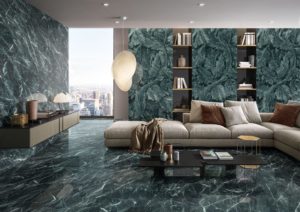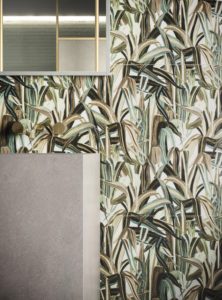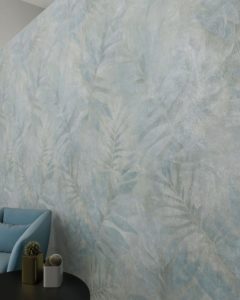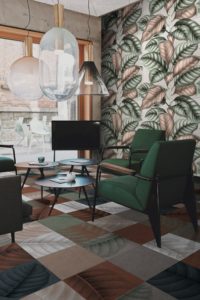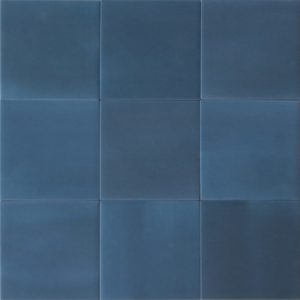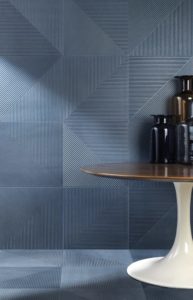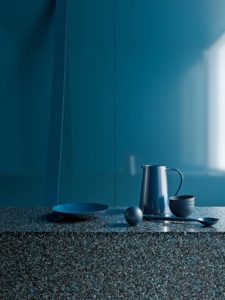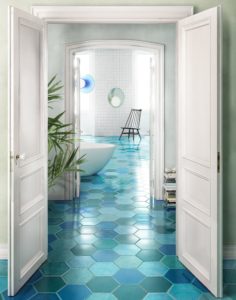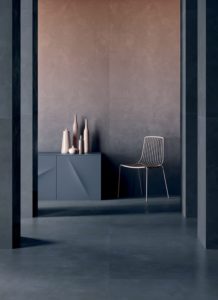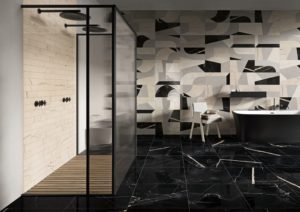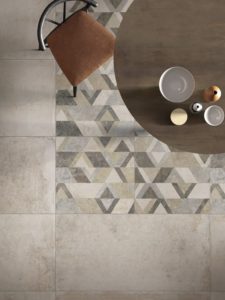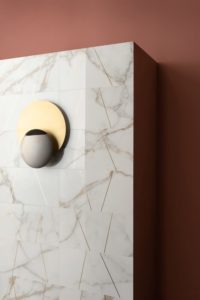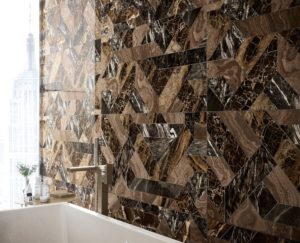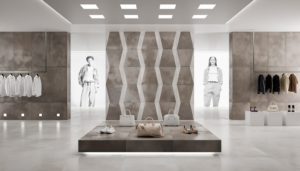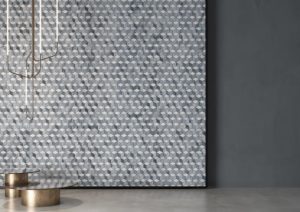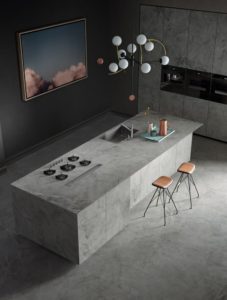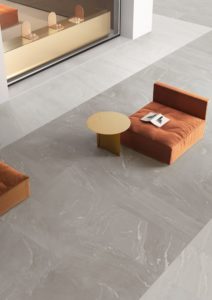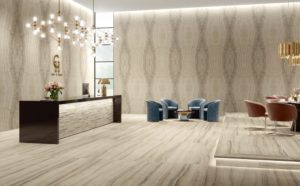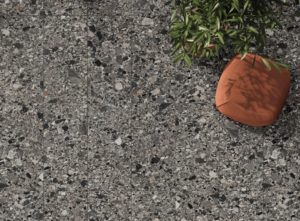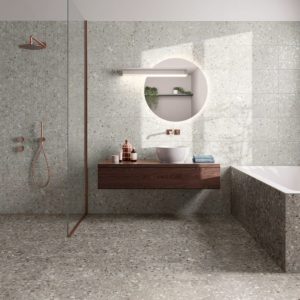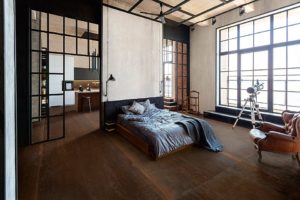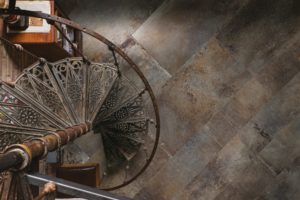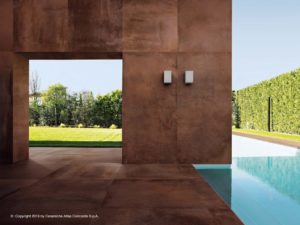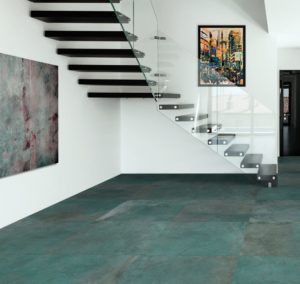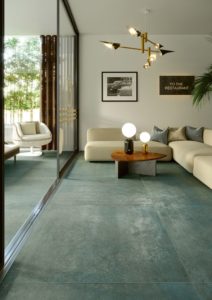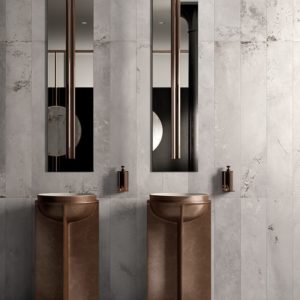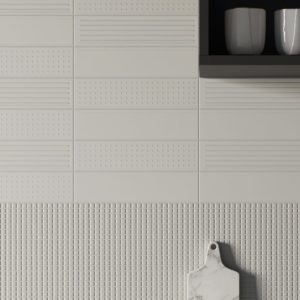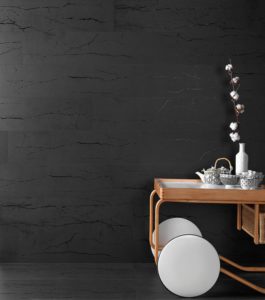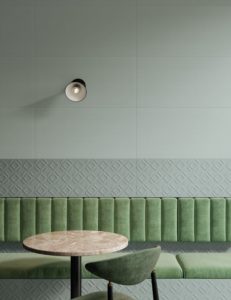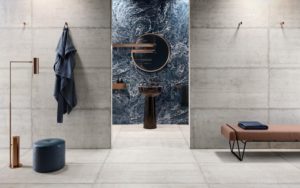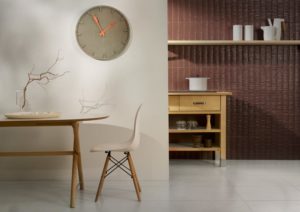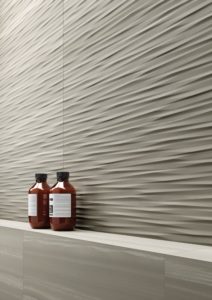Products Trends


2020 Spring-Summer Tile Trend Report
After reviewing hundreds of new product launches from Italian ceramic tile companies, here is a summary of the top six trends for the 2020 spring-summer season. While some of these trends are seasonal, such as blue, others showcase the Italian tile industry’s answer to important movements in design such as biophilia and the importance of telling a good story. These products are now available in the North American market through an extensive network of tile dealers and retailers. For additional products and inspiration, visit the Ceramics of Italy product gallery, which just published the 2020 Spring-Summer collection.
BIOPHILIA
The first major trend is Biophilia – the idea that humans possess an innate tendency to seek connections with nature. Or as online plant retailers keep insisting: Plants make people happy! Anecdotes aside, it is scientifically proven that nature has the power to reduce stress, improve cognitive function, and enhance mood and creativity, which is why companies like Amazon are taking biophilic design seriously, demonstrated in the jungle-like, glass-enclosed spheres that NBBJ designed for their headquarters in Seattle. Tiles mimicking nature can help improve a person’s perception of space, which is a good reason for architects and designers to consider incorporating them into their next project. Italian manufacturers offer a variety of plant-like tile designs from barely-there leaf prints, grassy motifs, and palm designs to pixelated florals, pop-art versions, and abstract gardens based on patterns and geometries found in nature.
- Fleurs by Bardelli
- Bloom by Fap
- Tele di Marmo Revolution by Emilceramica
- Opulence by Ceramiche Piemme
- H24 Camp Leaf by Supergres
- Botanica by Ornamenta
BLUE
Blue is one of the most popular hues in tile design this year, which also happens to dovetail with Pantone’s color of the year. According to Leatrice Eiseman, Executive Director of Pantone’s Color Institute, “classic blue gives the feeling of confidence and stability.” It also works really well for traditional interiors, best demonstrated in the iconic blue velvet room designed by William Kent for the Chiswick House. While there are many classic blue options, advanced technology allows manufacturers to recreate nearly every shade of blue under the sun. On the saturated side, designers can make a bold statement using solid bright blue tile, energize a room using blue marble with contrasting veining, and create a head-turning floor with the look of rare blue minerals like Blue Sodalite. Turquoise and teal can also be used to conjure vacations in the Mediterranean, especially when paired with hexagonal formats and whitewashed walls. On the other end of the chroma spectrum, greyish blues have a more subdued look and tie back to a sense of calm and serenity. However, they can still add visual interest when used with geometric formats and effects like hombre and terrazzo that add a playful twist without overpowering the space.
- Elevenuance by Tonalite
- Les Bijoux de Rex by Florim
- Matrix by Armonie
- Endless by LeonardoCeramica
- Sardinia by Cerasarda
- Join by Caesar
GEOMETRIC STONE
Geometric stone has been used since ancient times and is ubiquitous in countries like Italy, from terrazzo sidewalks to the floors of historic churches like the Florence Cathedral. Fast forward to modern times and Italian producers offer the look of Palladiana Terrazzo or inlaid stone without the headache of cutting, sorting and installing an assortment of small pieces. In fact, many companies offer a random selection of decorative tiles with their collections that incorporate fragments of different marble and stone types into a single tile design to mix and match and create completely unique and funky compositions. They are also designed to coordinate with field tiles, making the job of matching colorways a lot easier. Geometric stone can also be found in a variety of mosaic options from linear bricks to rhomboids that look like micro mosaics and metallic inserts on marble designs that can add a luxe touch.
- Sound of marbles by Fioranese
- Re_Tour by Flaviker
- Delight by Lea Ceramiche
- Rhapsody by Naxos
- Me_Tra by Sichenia
- Sky by Unicom Starker
MATERIAL STORIES
With so many products available in the market, it’s not enough to have a beautiful, high quality tile; it also needs to tell a good story. Luckily, manufacturers offer striking photography and imaginative narratives that conjure a specific place or mood – from rustic tiles reminiscent of a historic estate in Tuscany to collections that evoke the colors of the desert and the charm of Middle Eastern kasbahs. Tile producers also scour the world to find unique materials to incorporate into their collections, whether it’s a rare and precious marble or a limestone only found in a small village in northern Italy. Another way companies help tell a good story is by taking a traditional material and using it in another context like wall tiles that emulate French rustic stone, the interior application of a Greek slate traditionally used for outdoor flooring or even a volcanic stone that can now be used for countertops and furnishings. In fact, that is one of the beautiful things about digitally printed tile – it facilitates entirely new possibilities in design that were unheard of before.
- Atlantis by Abk
- Fjord by Impronta
- MyTop Infinito 2.0 by Fondovalle
- Skorpion by Cerdomus
- Chiaroscuro by Monocibec
- Frammenta by Saime
OXIDES
Oxidized metal has been a part of architecture and design for over a century, which you can see in various patina’d roofs of municipal buildings all over the country. Copper in particular produces a beautiful verdigris when it reacts with air or in the case of the Statue of Liberty, its own special hue of blue-green because of unique environmental conditions. Such is the case with these tile collections, revealing beautiful material and color stories minus the actual chemical reactions. From large format tiles with a beautiful green patina and ceramic mosaics with an imaginative oxidized blue to tiles that look like Corten or oxidized pewter for a modernized industrial look.
- Metal by Ava
- Temper by Cercom
- Blaze by Atlas Concorde
- Magnetic by EnergieKer
- Studio 50 by Serenissima
- Melt by Edimax Astor
TEXTURE
Texture is an enduring trend, which evolves in new ways every year as manufacturers continue to push the boundaries of tile beyond two dimensions. There are many different ways to create tactile interest on the surface from linear relief that creates a sense of movement to ceramic tile reminiscent of wood paneling from the Victorian era. For a traditional look, there are porcelain tiles emulating three-dimensional stone that can be used on interior or exterior walls. For a modern, industrial mood, there are countless tiles with interesting interpretations of formwork cement, rolled concrete and chiseled stone. Some manufacturers take an artisanal approach using glazes or plastic casts to create an imperfect surface and hand-crafted effect. Even tiles with a flat surface can give the appearance of depth and texture by using one of the oldest tricks in the book with a tromp tromp l’oeil effect.
- Regolo by Appiani
- Rift by Eikon
- Victoria by Marca Corona
- Form by Ceramica Sant’Agostino
- Matter by Settecento
- Hematite Prisma by Italgraniti
June 2020




